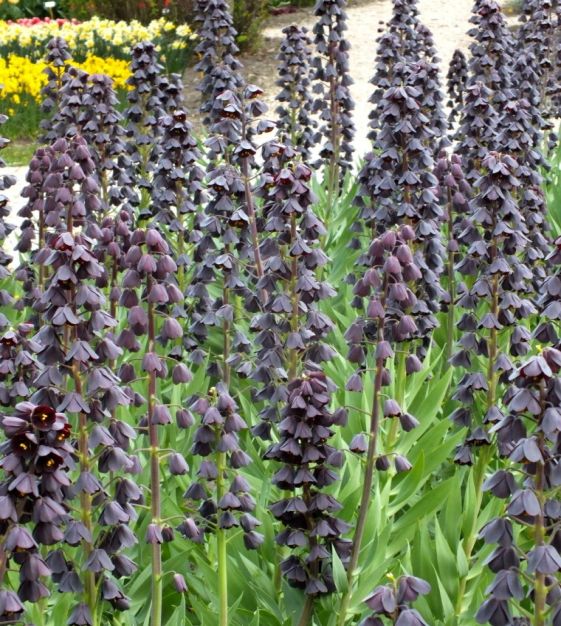-
- Discounted Collections
- Website Specials
- New for 2025!
- Tulips
- Narcissi
- Allium
- Anemone blanda
- Brodiaea
- Camassia
- Chionodoxa
- Corydalis
- Crocus
- Eranthis
- Eremurus
- Erythronium
- Fritillaria
- Galanthus
- Geranium
- Gladiolus
- Hyacinths
- Hyacinthoides
- Ipheion uniflorum
- Dutch Iris
- Rock Garden Iris
- Ixiolirion
- Leucojum aestivum
- Muscari
- Ornithogalum
- Oxalis
- Puschkinia
- Scilla
- Lilies
- Peonies
- Amaryllis
- Paperwhites
- Tender Bulbs
- Anemone Giants
- Tecolote Ranunculus
- Freesias
Fritillaria persica
Commonly known as The Persian Lily, this showy, statuesque 1585 heirloom creates a focal point in late spring display gardens. It offers a profusion of plum-colored, pendant bell-shaped flowers on strong 30" stalks above blue-green, wavy foliage. Some flowering racemes can have loosely compacted pendant florets while others, perhaps more mature specimens, can have up to 30 more tightly compacted florets. They are terrific planted in clusters of three or more for best effect, or blended with F. persica Ivory Bells. You’ll need about four bulbs per square foot. Bulb size: 20 cm/up. Full sunlight. Bloom time in horticultural zone 5: April/May. Plant 6" to 7" deep and 8" to 10" apart. HZ: 4-8. Height: 30".
Fritillaria are The Art & Soul of Spring.
Fritillaria Horticultural Tips
Fritillaria are The Art & Soul of Spring.
Fritillaria Horticultural Tips





